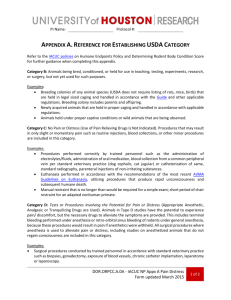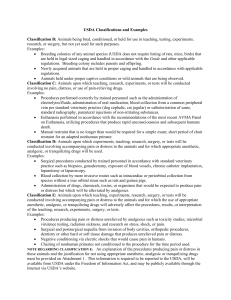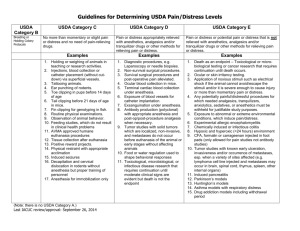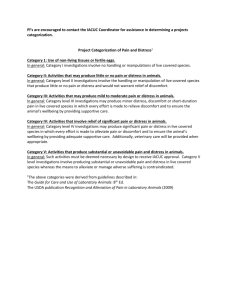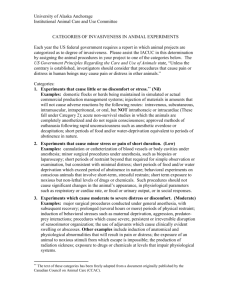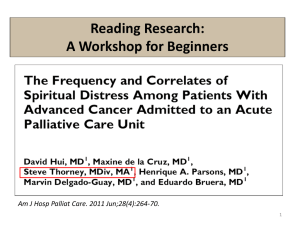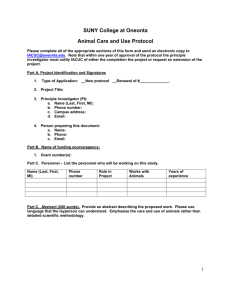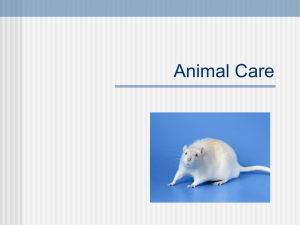DOR.ORPCC.A.0A IACUC NP Appx A Pain Distress
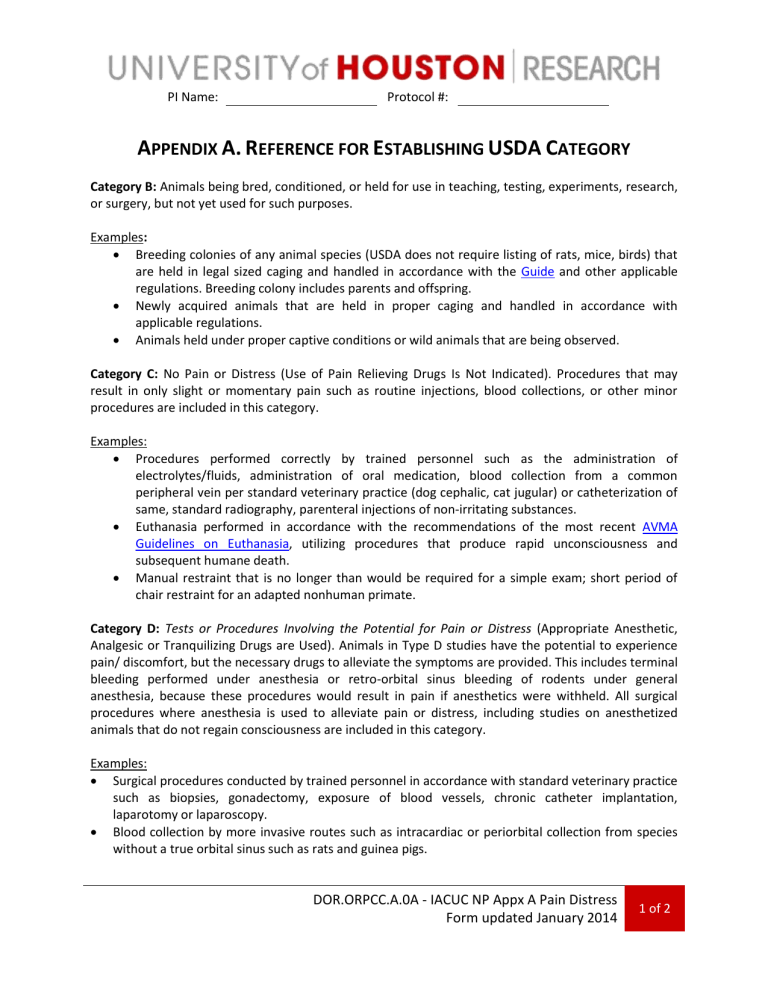
PI Name: Protocol #:
A
PPENDIX
A.
R
EFERENCE FOR
E
STABLISHING
USDA C
ATEGORY
Category B: Animals being bred, conditioned, or held for use in teaching, testing, experiments, research, or surgery, but not yet used for such purposes.
Examples:
Breeding colonies of any animal species (USDA does not require listing of rats, mice, birds) that are held in legal sized caging and handled in accordance with the Guide and other applicable regulations. Breeding colony includes parents and offspring.
Newly acquired animals that are held in proper caging and handled in accordance with applicable regulations.
Animals held under proper captive conditions or wild animals that are being observed.
Category C: No Pain or Distress (Use of Pain Relieving Drugs Is Not Indicated). Procedures that may result in only slight or momentary pain such as routine injections, blood collections, or other minor procedures are included in this category.
Examples:
Procedures performed correctly by trained personnel such as the administration of electrolytes/fluids, administration of oral medication, blood collection from a common peripheral vein per standard veterinary practice (dog cephalic, cat jugular) or catheterization of same, standard radiography, parenteral injections of non-irritating substances.
Euthanasia performed in accordance with the recommendations of the most recent AVMA
Guidelines on Euthanasia , utilizing procedures that produce rapid unconsciousness and subsequent humane death.
Manual restraint that is no longer than would be required for a simple exam; short period of chair restraint for an adapted nonhuman primate.
Category D: Tests or Procedures Involving the Potential for Pain or Distress (Appropriate Anesthetic,
Analgesic or Tranquilizing Drugs are Used). Animals in Type D studies have the potential to experience pain/ discomfort, but the necessary drugs to alleviate the symptoms are provided. This includes terminal bleeding performed under anesthesia or retro-orbital sinus bleeding of rodents under general anesthesia, because these procedures would result in pain if anesthetics were withheld. All surgical procedures where anesthesia is used to alleviate pain or distress, including studies on anesthetized animals that do not regain consciousness are included in this category.
Examples:
Surgical procedures conducted by trained personnel in accordance with standard veterinary practice such as biopsies, gonadectomy, exposure of blood vessels, chronic catheter implantation, laparotomy or laparoscopy.
Blood collection by more invasive routes such as intracardiac or periorbital collection from species without a true orbital sinus such as rats and guinea pigs.
DOR.ORPCC.A.0A - IACUC NP Appx A Pain Distress
Form updated January 2014
1 of 2
Administration of drugs, chemicals, toxins, or organisms that would be expected to produce pain or distress but which will be alleviated by analgesics.
Category E: Significant Pain or Distress Without the Benefit of Pain Relief These are procedures (e.g., efficacy studies of novel pain therapeutics) or situations (induction of chronic illness/disorder such as arthritis or liver failure) for which the use of analgesics, anesthetics or tranquilizing drugs would adversely affect the procedures, results or interpretation of data.
Examples:
Procedures producing pain or distress unrelieved by analgesics such as toxicity studies, microbial virulence testing, radiation sickness, and research on stress, shock, or pain.
Surgical and postsurgical sequella from invasion of body cavities, orthopedic procedures, dentistry or other hard or soft tissue damage that produces unrelieved pain or distress.
Negative conditioning via electric shocks that would cause pain in humans.
Chairing of nonhuman primates not conditioned to the procedure for extended time period (>12 hours).
For all E category classifications complete the Category E explanation sheet at the end of this form.
C
ATEGORY
E E
XPLANATION
F
ORM
This form is intended as an aid to completing the Column E explanation. It must be written in terms understood by lay persons as well as scientists.
List the Species (common name) of animals used in these studies
Explain the procedure producing pain and/or distress.
Provide scientific justification why pain and/or distress could not be relieved. State methods or means used to determine that pain and/or distress relief would interfere with test results.
Signature of Principal Investigator: Date:
DOR.ORPCC.A.0A - IACUC NP Appx A Pain Distress
Form updated January 2014
2 of 2
